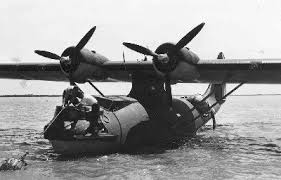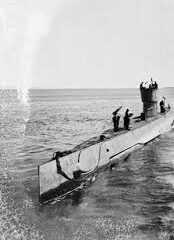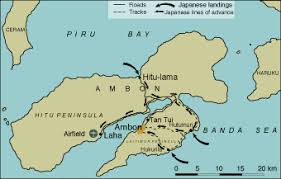As the Second World War spread rapidly into the Pacific, the Netherlands East Indies (NEI) found itself in urgent need of military supplies. Cut off from the occupied Netherlands and facing a Japanese threat from the north, the colonial government turned to the Allied powers for help. To coordinate arms procurement, the Dutch established purchasing missions abroad—first in the United States and, from early 1942, in Australia. These efforts, however, were marked by delay, disappointment and diplomatic tension.
The Netherlands Purchasing Commission for Australia and New Zealand was formally established in late January 1942, just weeks before the fall of the NEI. Rear-Admiral Frederik Willem Coster arrived in Darwin on 27 January and continued to Melbourne, where the Commission was based. He was joined by Jan van Holst-Pellekaan and representatives of the Royal Netherlands Navy and the Royal Netherlands Indies Army. The Commission’s goal was to secure arms, ammunition, and supplies through Australia’s expanding wartime industries.
The Dutch commission in Australia complemented an earlier Netherlands Purchasing Commission in the United States, which had operated since 1940. That office had focused on acquiring aircraft and munitions, particularly long-range reconnaissance planes such as the Catalina flying boat. Both offices were among the few official Dutch government-in-exile bodies functioning in the Pacific, and after the fall of the NEI, they became vital outposts for Dutch coordination with the Allies.
However, the timing and structure of these efforts reflected the reality that neither the Dutch nor the Australians were fully prepared for war. The NEI was under-equipped and isolated, while Australia—still heavily reliant on Britain—was in the early stages of wartime mobilisation. With Japan advancing swiftly, there were simply not enough supplies to go around.
Dutch requests were large and urgent: rifles, machine guns, ammunition, mortars, aircraft parts, explosives, and vehicles. But Australian production capacity was already stretched, and Britain and the United States received priority in Lend-Lease and other distribution systems. Australia agreed to some Dutch requests, including supplying ammunition and reboring thousands of rifles, but quantities fell short. Many orders were only partially fulfilled or delayed until it was too late to affect the defence of the Indies.
This situation led to considerable frustration. Dutch officials, having committed aircraft and troops to the defence of British Malaya and Singapore, felt let down by the limited support they received when their own territories came under attack. Australian officials, on the other hand, saw the Dutch requests as unrealistic given Australia’s own urgent needs. Jack Ford, in Allies in a Bind, documents how Dutch and Australian military and diplomatic figures became increasingly irritated with one another, often due to misunderstandings or conflicting priorities.
Australia also experienced its own disillusionment, particularly with Britain, after the fall of Singapore and the limited assistance provided to defend northern Australia. This sense of betrayal mirrored Dutch frustration and, ironically, brought the two countries into closer alignment. Dutch naval forces regrouped in Australian ports, Dutch civilians and officials settled in exile, and cooperation in areas like logistics, communications, and naval patrols intensified.
Despite its limited practical outcomes, the Dutch purchasing mission in Australia played an important symbolic and administrative role. It marked the beginning of a more independent Dutch diplomatic presence in the region and reflected the broader transition of Australia from a junior dominion of the British Empire to a more self-directed regional power.
The failure to adequately supply the Netherlands East Indies before its fall highlights the difficulties of wartime coalition logistics. It also underscores the real tensions that can arise when small and mid-sized allies feel overlooked within broader strategic frameworks. Yet from these difficult beginnings, a new Dutch–Australian wartime partnership emerged—one forged not in strength, but in shared vulnerability.
References:
Jack Ford, Allies in a Bind: Australia and the Netherlands East Indies in the Second World War, CQU Press, 2001
R. W. A. van den Berg, Unchained Interests, Netherlands Staff College Monograph, 2021


